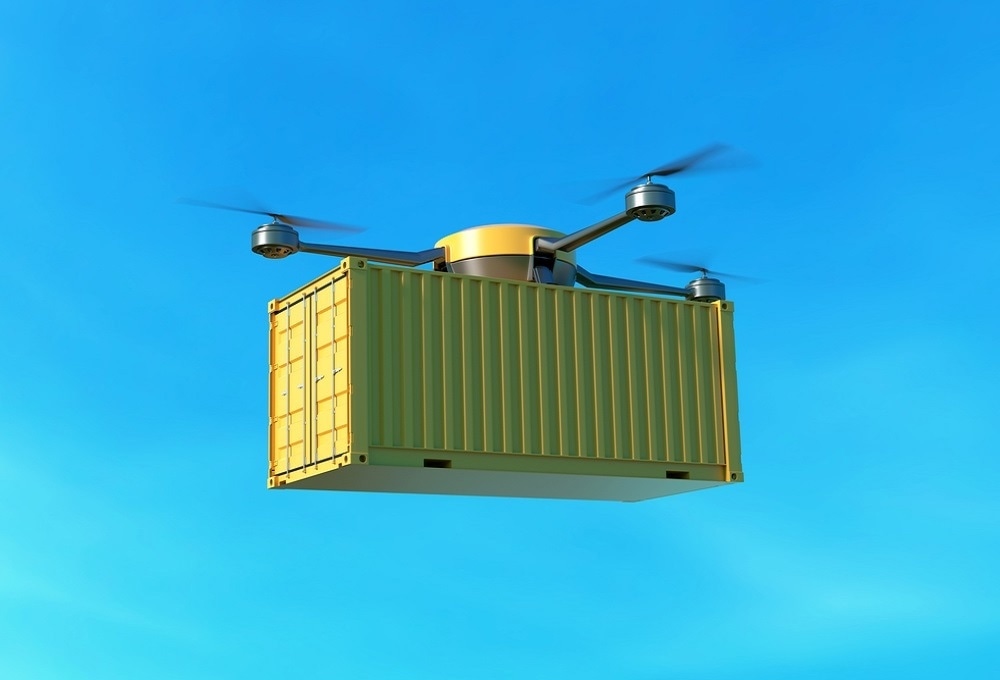
Image Credits: Essarawuth/shutterstock.com
Automation can be a very scary term but less so if it helps us move large objects, which is why cargo drones are likely to be viewed positively by the public. And they are closer to being at a store near you than you think.
Amazon is already testing its “Prime Air” service that will bring drone-delivered packages at up to five pounds in 30 minutes to its customers. Then for larger loads, a 200-foot drone, Natilus, is set to launch by 2020 thanks to its namesake company and aerospace and design firm Ottermatics. The unmanned aerial vehicle (UAV) is expected to carry a 200,000 cargo load, the same as a large jet, but at 70% of the cost in part due to its lower flying altitudes of approximately 80 feet above the ocean. Trips across oceans are expected to be about half of the expense involved in transporting freight by commercial air and, of course and faster at up to half the time. Energy to power the drone will come from jet fuel combined with turboprop and turbofan engines.
An important application for cargo drones as one would imagine is medical supply transport. 2015 saw the first drone flight that was Federal Aviation Administration-approved conducted in Virginia using a UAV built by the Australian company Flirtey.
In a recent issue of Transfusion results on a drone carrying blood supplies vouched for the technology’s effectiveness at preserving control of temperature-controlled containers. Timothy Amukele, Assistant Professor of Pathology, and colleagues at
Johns Hopkins University assessed, even after suspecting acceleration or vibration might prove too altering, the hematological and microbial qualities of blood samples before and after drone transport. Fortunately, they found no damage or changes.
Specifically, the team evaluated several flights of 18 blood units in a five-quart cooler equipped with wet and dry ice and thermal packs using a drone made by DJI. Six leukoreduced red blood cell and six frozen plasma units were sent on flights up to 26.5 minutes. Following the arrivals, the Scientists checked for hemolysis, changes to the apheresis platelet count and other signs of compromise but found none. Temperature was consistently maintained.
Over the next 10 years, some experts predict drones will disrupt the logistics industry. The FAA has already issued drone-operating rules. Some companies other than Natilus and DJI in the drone-transport space include Matternet and MultiRotor.
For example, Matternet announced in 2016 a partnership with Mercedes Benz to supply their vans with aerial delivery drones that can be guided by cloud-linked routing software. Matternet has already received certifications from aviation officials in the United States and internationally to allow drone service along pre-defined urban and non-urban routes. For its transport applications, the company is using a M2 drone that can transport 4.4 pounds up to 12 miles per each battery charge. Considered autonomous as in not needing human assistance, the drone both can deposit and pick up a payload including another battery.
Matternet or a rival’s technology might just be the preferred carrier for medical supplies, particularly given that Matternet is already mastering smart analytics such as proof of delivery for its M2. Medical Professionals like the members of the Johns Hopkins team would require such features. Already, that team is testing larger blood units such as ones that could be used for emergency transfusions. Thus, drone transports are quickly being thought of, not just for cargo and food perishables, but for any life saving measures when time is critical and the location of people can be difficult if not impossible to reach.

 Request further information here
Request further information here
Sources and Further Reading
Disclaimer: The views expressed here are those of the author expressed in their private capacity and do not necessarily represent the views of AZoM.com Limited T/A AZoNetwork the owner and operator of this website. This disclaimer forms part of the Terms and conditions of use of this website.